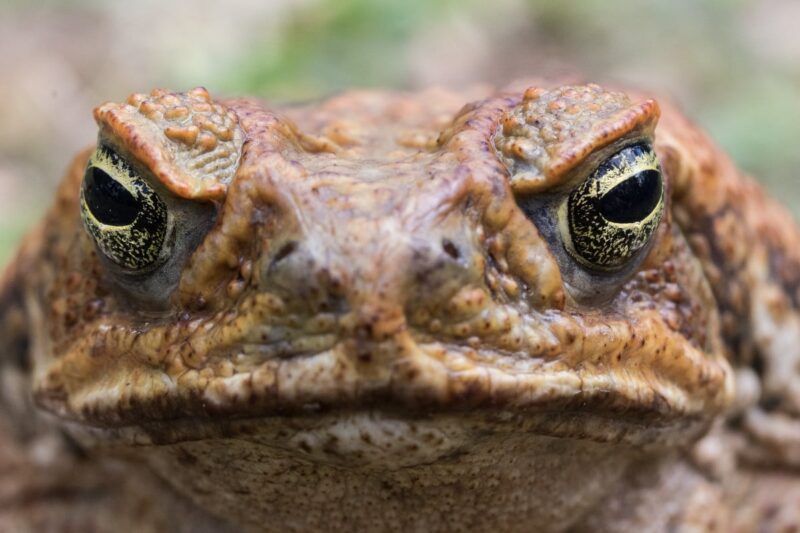The delicate balance of our planet’s ecosystems relies on the harmonious interaction of native species. Unfortunately, the intrusion of non-native species, known as invasive species, disrupts this equilibrium, posing severe threats to biodiversity and ecosystem stability.
As responsible homeowners, it’s essential to understand the impact of invasive species, recognize their presence, and take proactive measures to prevent and manage their spread. In this comprehensive guide, we will delve into the world of invasive species, exploring their implications, common offenders, and strategies for homeowners to effectively combat this ecological challenge.
Understanding the Menace of Invasive Species
Invasive species are organisms, including plants, animals, and microorganisms, that are introduced to new environments where they lack natural predators or competitors. Freed from the checks and balances of their native ecosystems, these invaders rapidly reproduce, outcompeting native species for resources and altering the delicate ecological balance.
Impact on Ecosystems
The ramifications of invasive species are multifaceted and extend far beyond their immediate surroundings:
Biodiversity Loss: Invasive species aggressively compete for resources, leading to declines in native populations, reduced genetic diversity, and even extinction.
Habitat Alteration: Invasive plants alter soil composition and shade patterns, disrupting the habitats of native species and reducing their chances of survival.
Food Web Disruption: Invasive species often lack predators or natural controls, allowing their populations to explode and disrupt the intricate web of interactions within ecosystems.
Economic Consequences: Invasives can cause substantial financial losses, damaging agriculture, forestry, fisheries, and tourism industries.
Disease Transmission: Some invasive species carry pathogens that can impact both native species and human health.
Identifying Common Invasive Species
Homeowners can significantly contribute to curbing the spread of invasive species by recognizing common offenders:
Brown Marmorated Stink Bug (Halyomorpha halys):
One of the most common stink bug species in North America is the brown marmorated stink bug (Halyomorpha halys). It is an invasive species that originated in East Asia but has spread to many parts of the United States and other countries.
Appearance: Shield-shaped insects with a mottled brown appearance. Stink bugs come in various species, and their appearance can vary, but they generally have a distinct shield-like shape, with six legs and antennae.
Impact: Invade homes during winter seeking warmth, emitting a foul odor when threatened. This odor serves as a defense mechanism against potential predators.
Japanese Knotweed (Fallopia japonica):
Appearance: Tall, bamboo-like stems, heart-shaped leaves, clusters of small white flowers.
Impact: Outcompetes native plants, poses flooding risks, and damages infrastructure.
European Starlings (Sturnus vulgaris):
Appearance: Blackbirds with white-tipped feathers and a yellow beak.
Impact: Compete with native birds for nesting sites and food resources.
Emerald Ash Borer (Agrilus planipennis):
Appearance: Small metallic green beetle with a distinctive copper or purple-red abdomen.
Impact: Devastates ash tree populations by burrowing into bark and disrupting nutrient flow.
Giant Hogweed (Heracleum mantegazzianum):
Appearance: A towering plant with white umbrella-like flower clusters and large, deeply lobed leaves.
Impact: Its sap causes severe skin burns; outcompetes native plants along waterways.
Cane Toad (Rhinella marina):
Appearance: Large, warty toad with distinctive ridges above eyes and parotoid glands.
Impact: Toxic to pets and native predators, disrupts local food chains.
Eastern Gray Squirrel (Sciurus carolinensis):
Appearance: Medium-sized squirrels with gray fur and white undersides.
Impact: In some areas, non-native gray squirrels can outcompete native squirrel species and damage property by chewing on electrical wires and entering attics.
Zebra Mussels (Dreissena polymorpha):
Appearance: Small, striped shellfish with a distinctive zebra-like pattern on their shells.
Impact: Attach to pipes and infrastructure, clogging water intake systems and causing maintenance issues.
Common House Gecko (Hemidactylus frenatus):
Appearance: Small geckos with flattened bodies, large eyes, and sticky toe pads for climbing.
Impact: Invade homes through small openings and become pests indoors.
Common Reed (Phragmites australis):
Appearance: Tall grass with feathery flower plumes and hollow stems. Leaves are blue-green and long.
Impact: Rapid growth can obstruct waterways, create fire hazards, and reduce property values.
Effective Prevention and Management
Homeowners can make a significant impact by taking proactive steps to prevent and manage invasive species:
Educate Yourself: Familiarize yourself with invasive species prevalent in your region. Local conservation organizations and government agencies offer resources and workshops.
Prioritize Native Plants: Opt for native plants when landscaping, as they support local wildlife and are well-adapted to the ecosystem.
Avoid Introducing Non-Natives: Refrain from planting invasive species, as they can escape gardens and spread to natural habitats.
Maintain Clean Gear: Clean hiking, fishing, and gardening equipment to prevent the inadvertent transfer of invasive species.
Report Sightings: If you spot a potential invasive species, report it to local authorities or relevant organizations. Early detection is crucial for effective management.
Preventing Invasive Insects From Your Home
Implement Integrated Pest Management: If your property is invaded, consider employing integrated pest management techniques, combining multiple strategies to minimize environmental impact.
Support Invasive Species Removal: Participate in community efforts to remove invasive species from local habitats. Your involvement can make a significant difference.
Seal Entry Points: Regularly inspect your home’s exterior for cracks, gaps, and openings that insects could use to enter. Seal gaps around windows, doors, vents, and utility entry points using weatherstripping, caulking, or mesh screens.
Install Screens: Fit fine-mesh screens on windows, doors, vents, and other openings to keep insects out while allowing air circulation.
Inspect and Seal: Regularly inspect the exterior of your home for potential entry points and seal them with caulk or weatherstripping.
Store Firewood Away: Keep firewood stored away from your home’s exterior, as insects can hide in woodpiles and gain entry to your home.
Reduce Attractants: Keep outdoor lights off at night, as many insects are attracted to light. With your landscaping, be sure to remove overripe fruits from trees or plants near your home. Trim trees, shrubs, and plants away from your home’s exterior to prevent insects from using them as pathways. Additionally, homeowners should remove leaf litter, fallen fruit, and standing water, and dispose of organic waste, such as garden clippings and food scraps, properly to prevent attracting pests.
Property Cleanliness: Keep your home clean and tidy, minimizing potential food sources for insects. If bugs have already entered your home, consider using a vacuum cleaner to collect and dispose of them. Be sure to empty the vacuum bag or canister immediately to prevent them from spreading.
Professional Help: If you have a severe infestation, consider seeking help from pest control professionals who can provide targeted solutions. A home inspection will often reveal invasive species, so be sure to manage any issues of which you’re made aware.
Conclusion
Invasive species pose a global challenge that demands collective action. As a homeowner, you hold a vital role in safeguarding our ecosystems from the destructive impact of these invaders. By understanding invasive species’ repercussions, familiarizing ourselves with common culprits, and taking decisive preventative measures, we can contribute to the preservation of biodiversity, restoration of ecosystems, and mitigation of economic losses.
The battle against invasive species requires ongoing vigilance, education, and collaboration. As guardians of our homes and the environment, homeowners are instrumental in addressing this ecological crisis and ensuring a healthier, balanced planet for future generations. Through those efforts, homeowners can make a lasting impact, fostering sustainable coexistence between native species and the environments they inhabit.
—
[PODCAST] Episode 36 of NAEBA’s Listen Up Homebuyers podcast discusses another invasive species: the Spotted Lantern Fly. Listen here

